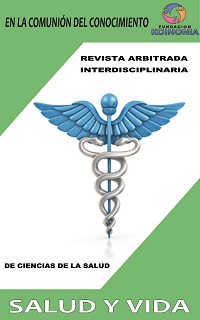Evaluation of the tumor marker (PSA) in blood serum for the diagnosis of canine prostatic disorders
DOI:
https://doi.org/10.35381/s.v.v7i14.2517Keywords:
Pathology veterinary, anatomy veterinary, prostatic diseases, (DeCS)Abstract
Objective: To evaluate serum prostate specific antigen (PSA) concentrations in normal and prostate disordered dogs. Methods: Descriptive observational. Results: Serum concentrations of free and total PSA in forty dogs under study showed that healthy dogs had a maximum concentration of 0.98 ng/ml, a minimum of 0.03 ng/ml, with an overall mean of 0.98 ng/ml. 03 ng/ml, with an overall mean of 0.36 ng/ml of total PSA, while the free PSA concentration of the healthy animals analysed determined a concentration range from 0.1 ng/ml to 0.82 ng/ml in blood with a total mean of 0.39 ng/ml. Conclusion: No increase in serum concentration of free and total prostate antigen was obtained due to the low specificity of the blood test according to the results reported.
Downloads
References
Stornelli, M. Luzbel de la Sota, R. Manual de reproducción de animales de producción y compañía [Production and companion animal reproduction manual]. 2016. [Internet]. Editorial de la Universidad de La Plata. https://core.ac.uk/download/pdf/301073785.pdf
Cunto M, Mariani E, Anicito Guido E, Ballotta G, Zambelli D. Clinical approach to prostatic diseases in the dog. Reprod Domest Anim. 2019;54(6):815-822. doi:10.1111/rda.13437
Christensen BW. Canine Prostate Disease. Vet Clin North Am Small Anim Pract. 2018;48(4):701-719. doi:10.1016/j.cvsm.2018.02.012
Bosma F, Wijsman S, Huygens S, Passon-Vastenburg M. Ultrasonographic measurements of the prostate gland in castrated adult dogs. Acta Vet Scand. 2022;64(1):15. Published 2022 Jul 8. doi:10.1186/s13028-022-00634-1
Ygreda G, Grandez R, Valencia R. Caracterización de Alteraciones Ultrasonográficas Prostáticas en Perros Atendidos en una Clínica Veterinaria en Lima, Perú, entre 2010 y 2014 [Characterization of Prostatic Ultrasound Changes in Dogs Attended at a Veterinary Clinic in Lima, Perú, between 2010 and 2014]. Rev. investig. vet. Perú [Internet]. 23 de julio de 2017 [citado 7 de julio de 2023];28(2):299-306. https://doi.org/10.15381/rivep.v28i2.12480
Alonge S, Melandri M, Aiudi G, Lacalandra GM. Advances in Prostatic Diagnostics in Dogs: The Role of Canine Prostatic Specific Esterase in the Early Diagnosis of Prostatic Disorders. Top Companion Anim Med. 2018;33(4):105-108. doi:10.1053/j.tcam.2018.09.002
Angrimani DSR, Silvestrini GR, Brito MM, Abreu RA, Almeida LL, Vannucchi CI. Effects of benign prostatic hyperplasia and finasteride therapy on prostatic blood flow in dogs. Theriogenology. 2018;114:103-108. doi:10.1016/j.theriogenology.2018.03.031
Palmieri C, Fonseca-Alves CE, Laufer-Amorim R. A Review on Canine and Feline Prostate Pathology. Front Vet Sci. 2022;9:881232. doi:10.3389/fvets.2022.881232
Golchin-Rad K, Mogheiseh A, Nazifi S, Ahrari Khafi MS, Derakhshandeh N, Abbaszadeh-Hasiri M. Changes in specific serum biomarkers during the induction of prostatic hyperplasia in dogs. BMC Vet Res. 2019;15(1):440. doi:10.1186/s12917-019-2201-5
Guest C, Harris R, Sfanos KS, et al. Feasibility of integrating canine olfaction with chemical and microbial profiling of urine to detect lethal prostate cancer. PLoS One. 2021;16(2):e0245530. doi:10.1371/journal.pone.0245530
Gelpi-Méndez J.A., Gómez-Fernández E., Martín-Barallat J., Cortés-Arcas M.V., Monsonis-Artero J.V., Calvo-Mora A. Reference values of prostate specific antigen (PSA) in 63926 workers without prostatic symptoms who participated in prostate screening cancer developed by the Ibermutuamur Prevention Society in 2006. Actas Urol Esp [Internet]. 2010; 34(8): 669-676.
Rodríguez-Báez Álvaro, Comoto-Santacruz David Alberto, Saldaña-Rivera Elsa, Rodríguez-Ayala Ernesto. Expresión de miRNAs en orina como herramienta de diagnóstico y pronóstico en cáncer de próstata [Expression of urine miRNAs as a diagnostic and prognostic tool in prostate cancer]. Rev. sanid. mil. [revista en la Internet]. 2022; 76(3): e03. https://doi.org/10.56443/rsm.v76i3.254.
Amorim RL, Moura VMBD, Di Santis GW, Bandarra EP, Padovani C. Serum and urinary measurements of prostatic acid phosphatase (PAP) and prostatic specific antigen (PSA) in dogs. Arq Bras Med Vet Zootec [Internet]. 2004;56(3):320–4. https://doi.org/10.1590/S0102-09352004000300006
Sun F, Báez-Díaz C, Sánchez-Margallo FM. Canine prostate models in preclinical studies of minimally invasive interventions: part II, benign prostatic hyperplasia models. Transl Androl Urol. 2017;6(3):547-555. doi:10.21037/tau.2017.03.62
Yuan B, Duan F, Zhang JL, Zhang H, Wang MQ. Establishment of hormone-induced canine benign prostatic hyperplasia model: A prospective, controlled study. Heliyon. 2022;8(11):e11352. doi:10.1016/j.heliyon.2022.e11352
Published
How to Cite
Issue
Section
License
Copyright (c) 2023 Jeniffer Patricia Chafla-Valverde, Nathalie del Consuelo Campos-Murillo

This work is licensed under a Creative Commons Attribution-NonCommercial-ShareAlike 4.0 International License.
CC BY-NC-SA : Esta licencia permite a los reutilizadores distribuir, remezclar, adaptar y construir sobre el material en cualquier medio o formato solo con fines no comerciales, y solo siempre y cuando se dé la atribución al creador. Si remezcla, adapta o construye sobre el material, debe licenciar el material modificado bajo términos idénticos.
OAI-PMH: https://fundacionkoinonia.com.ve/ojs/index.php/saludyvida/oai.









